Did You Know?
The island’s name, Sadh Belo, translates to "woods of the sage," honoring Baba Bankhandi, who spent many years in solitary meditation, founding the temple
27°41'37.7"N 68°52'44.1"E
The island’s name, Sadh Belo, translates to "woods of the sage," honoring Baba Bankhandi, who spent many years in solitary meditation, founding the temple
The Best Time to Visit Sindh Province is Winters. Preferably from September to April Peak Summers (May to August) can get extremely hot with temperatures reaching higher than 40 °C . Hence Summers are not recommended.

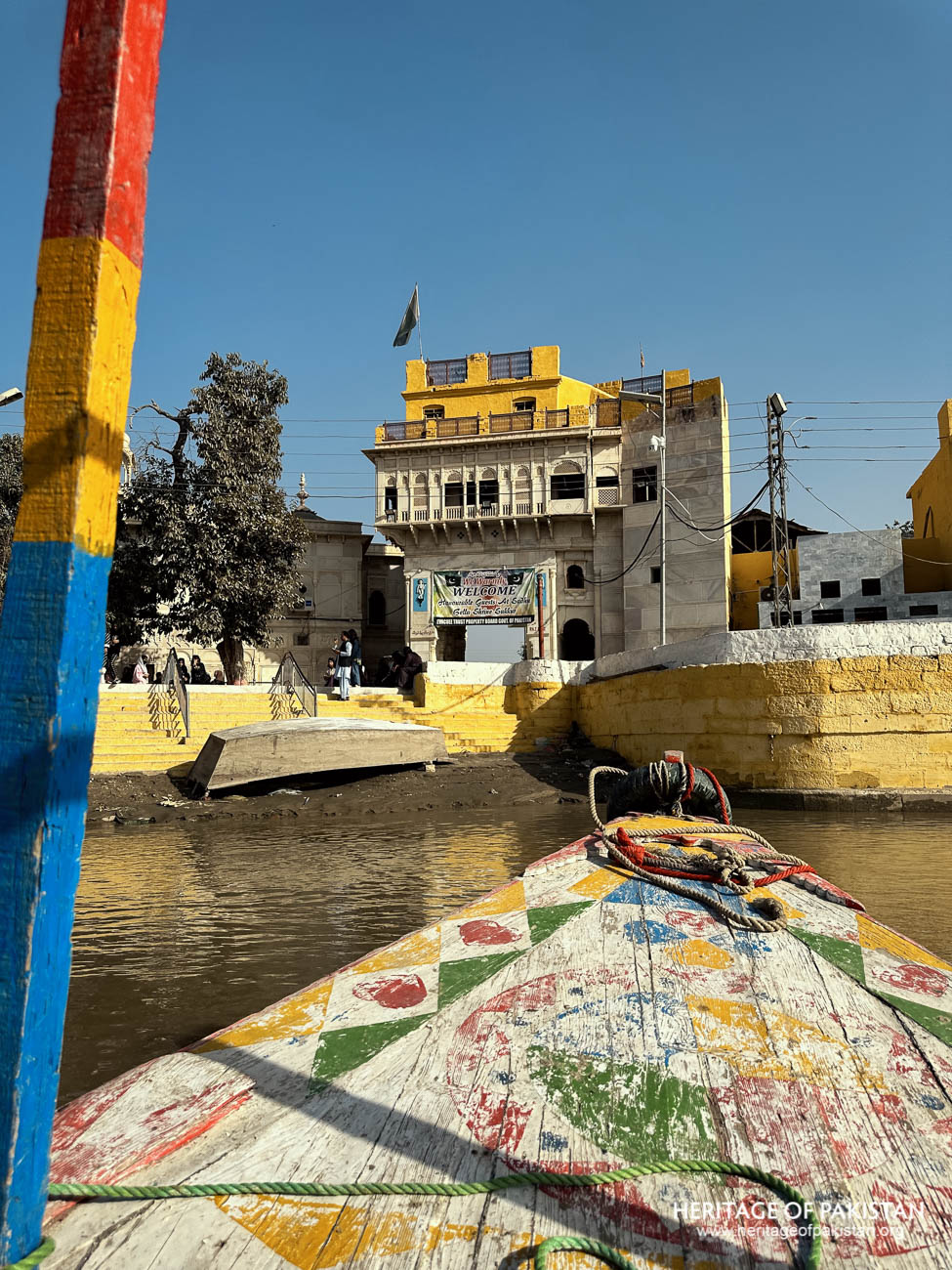
Sadhu Belo is an island situated in the Indus River near Sukkur, known for its revered Hindu temples collectively referred to as the Sadhu Belo or Sadhu Bela temples. The site holds significant spiritual importance for both Hindus and Sikhs and is particularly central to the religious tradition of Udasipanth. Accessible by boat from Bander Road in Sukkur, the island has become a prominent pilgrimage destination.
The island, originally a forested area known as Menak Parbat, was established as a sacred site in 1823 by Baba Bankhandi, an Udasi missionary who traveled from Nepal. At the time of his arrival, the island was merely a clump of trees. Drawn to its serenity, Bankhandi chose the site to establish his dhuni (sacred fire), leading to the name 'Sadhu Belo,' which translates to "woods of the sage." He lived a hermit's life on the island until his death at the age of sixty.

Intricately carved Marble Jharokas at the Sadh Belo Temple
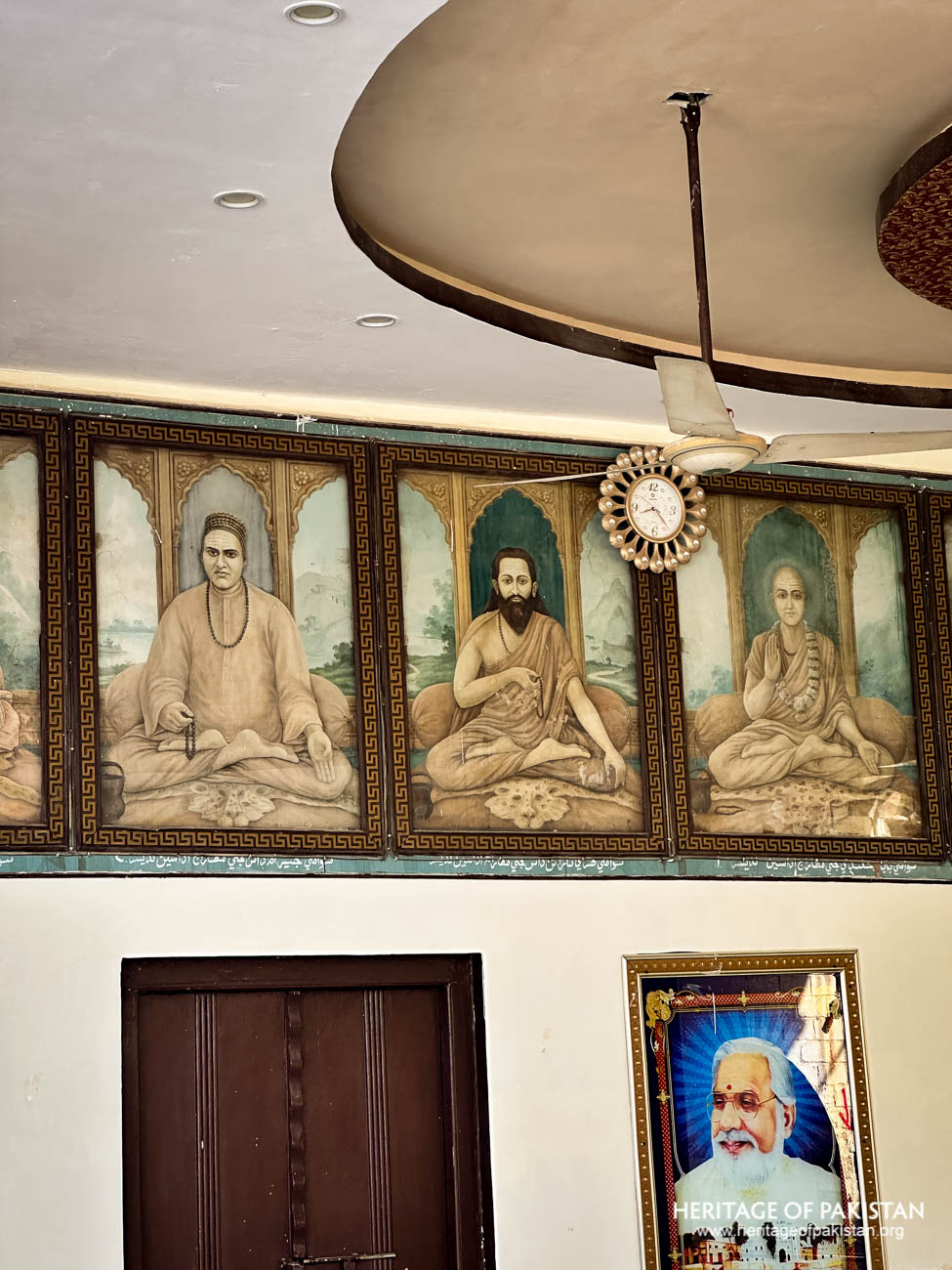
Portraits of Gurus at the Sadh Belo Temple
Bankhandi founded multiple places of worship on the island, including temples dedicated to deities such as Annapurna, Hanuman, Ganesh, and Shiv Shankar, as well as spaces for the Granth Sahib and the Bhagavad Gita. Over time, Sadhu Belo evolved into a thriving spiritual center with numerous temples attracting seekers and devotees.
The Udasipanth, to which Sadhu Belo belongs, is a religious and ascetic tradition rooted in the teachings of Sri Chand (1494–1643), the elder son of Guru Nanak (1469–1539), the founder of Sikhism. Udasis regard themselves as a denomination within Sikhism, emphasizing renunciation and spiritual discipline. The term 'Udasi' is derived from Sanskrit, meaning one who is detached from worldly attachments, a stoic, or a mendicant.
The island complex comprises nine temples along with ancillary structures designed to accommodate and facilitate yatris (pilgrims). Several of these structures exhibit intricate architectural detailing, with white marble employed extensively in their construction. The principal temple features elaborately carved white marble jharokas and relief panels depicting scenes associated with the Udasi tradition. In addition, the complex is adorned with various religious motifs, symbolic representations, and iconography related to revered Udasi gurus, serving both decorative and devotional functions.
To reach Sadh Belo, visitors have to take a boat ride from Bunder road in Sukkur from the bank of the Indus river, which is an experience in itself. Usually permission has to be sought from temple administration to visit the temple.
Presently, Sadhu Belo is administered by the Evacuee Property Trust Board and continues to be a significant religious site, drawing thousands of devotees annually.
Near the Sadh Belo lie other tourist sites and monuments. Starting from the Bukkur Island, an island in Indus river home to a historic military fortress. The Iconic lansdowne bridge of sukkur is also situated near the Sadh Belo Island. Furthermore, the tomb of Seven Sisters also lie near the Sadh Belo temples. Visitors exploring the area must make sure to visit all of them.
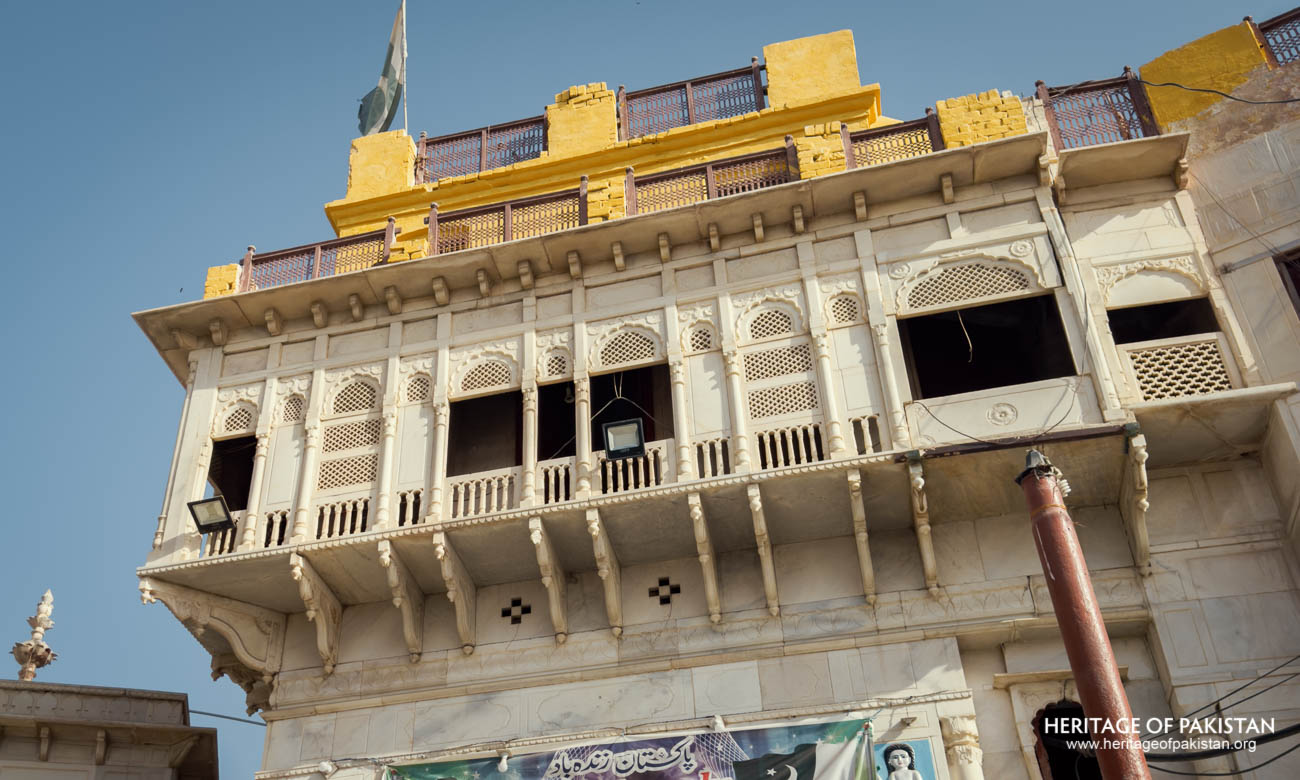
Marble jharoka on the entrance of Sadh Belo
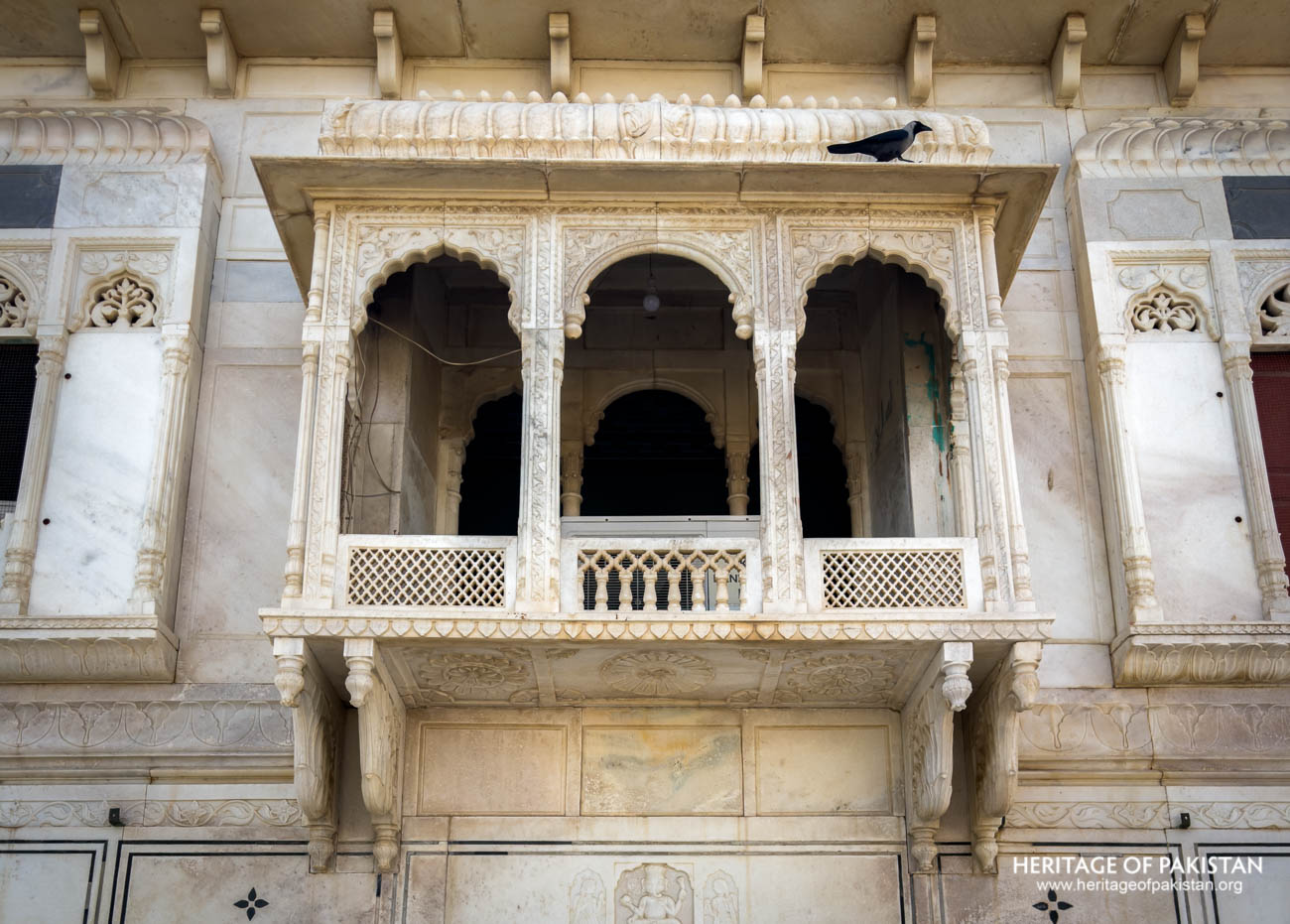

Relief sculpture at Sadhu Belo Temple
As one approaches the island of Sadhu Belo, the striking yellow and white façade of the temple complex becomes immediately visible. A flight of steps from the riverbank leads directly to the entrance of the temple. The entrance structure is a grand, double-storied gateway featuring a prominent rectangular jharoka carved in white marble. This jharoka is divided into multiple panels by intricately decorated marble columns and includes arched sections filled with finely crafted marble lattice screens (jaalis). The entire structure is supported by elaborately carved marble brackets, enhancing its architectural elegance.
Visitors enter the temple complex through a semi-circular arched gateway, also clad in white marble and flanked by decorative marble columns. This entrance leads directly to the main Dharam Mandir, the principal place of worship within the complex. The temple walls are adorned with detailed carvings and motifs that reflect Hindu religious themes.
A particularly iconic architectural feature within the complex is a double jharoka—an intricately constructed marble balcony with a curved top and a façade ornamented with finely detailed jaalis. This double jharoka stands as a notable example of craftsmanship within the temple’s decorative vocabulary.
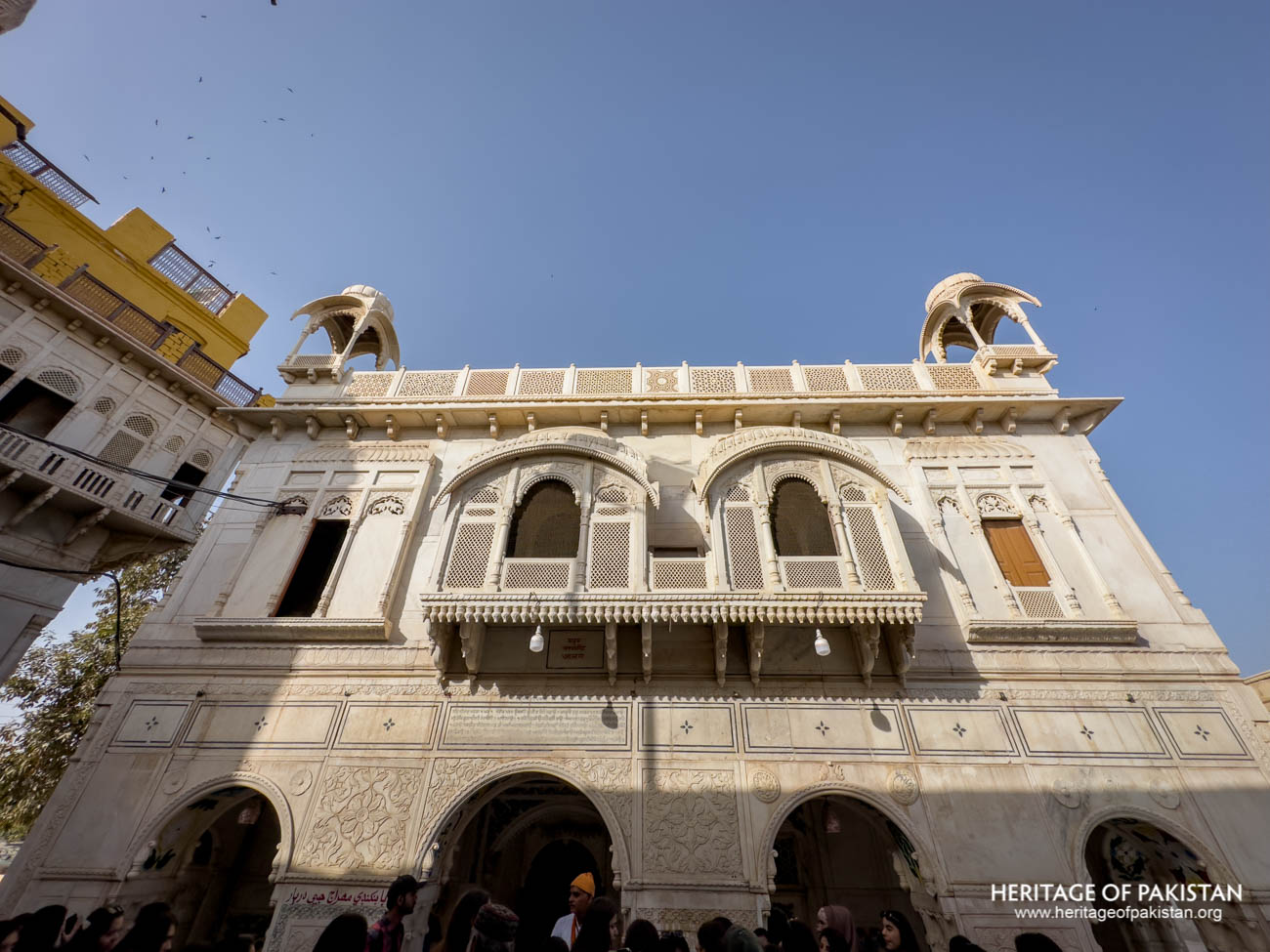
The Sadhu Belo temple complex comprises a total of nine temples, each serving distinct religious functions. In addition to the temples, the island houses several auxiliary structures that support the spiritual and communal life of its visitors. These include accommodations for yatris (pilgrims), a library, communal dining facilities, an expansive garden, and residential quarters for monks and spiritual retreatants who wish to reside on the island.
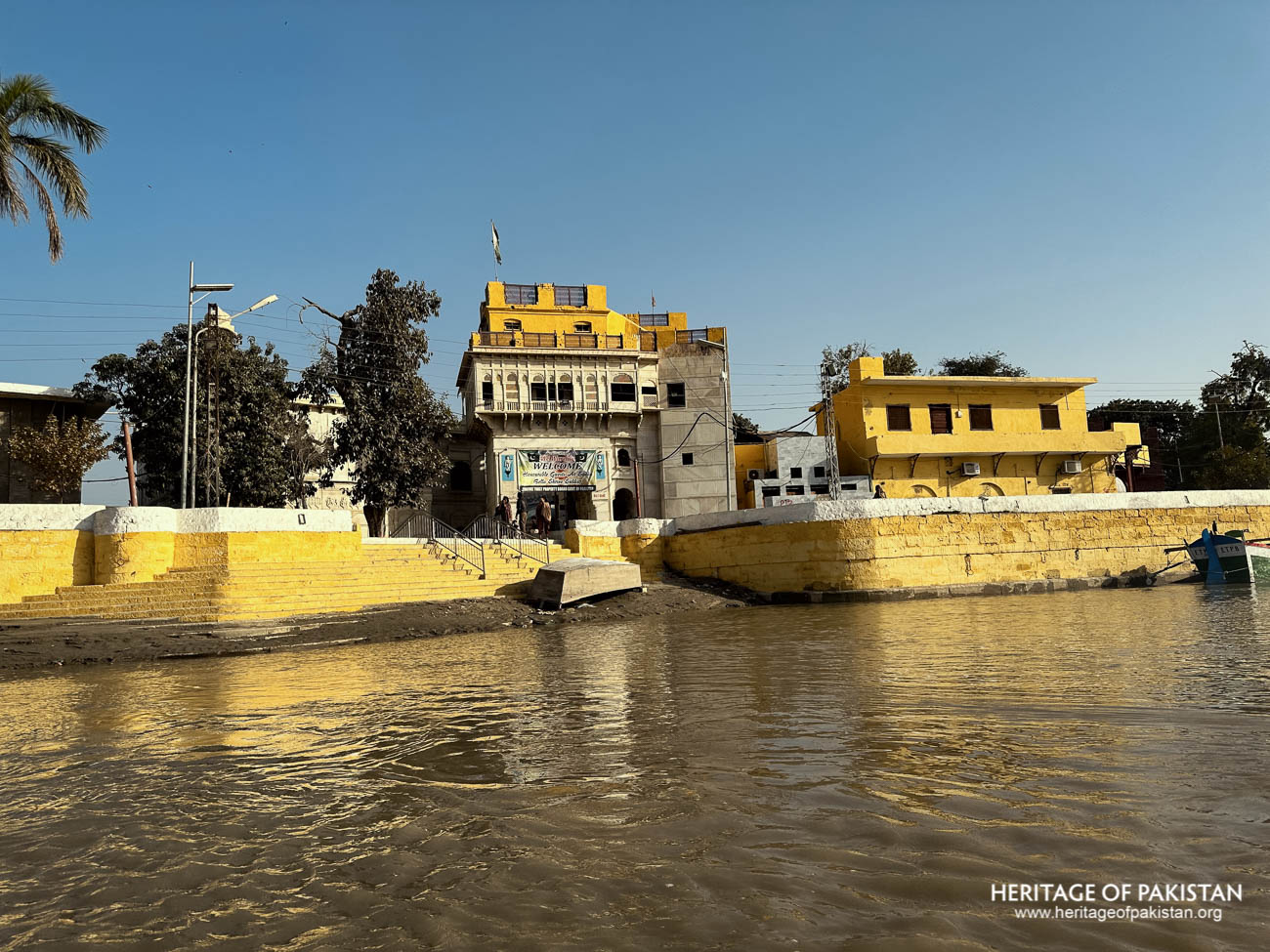

Discover Sadh Belo Temple gallery and immerse yourself in stunning photographs

All Photographs by Syed Noor Hussain and Sania Azhar.
All Rights Reserved. Photos may be used for Non-Commercial, Educational, Artistic, Research, Non-Profit & Academic purposes.
Commercial uses require licensing agreement.


Add a review